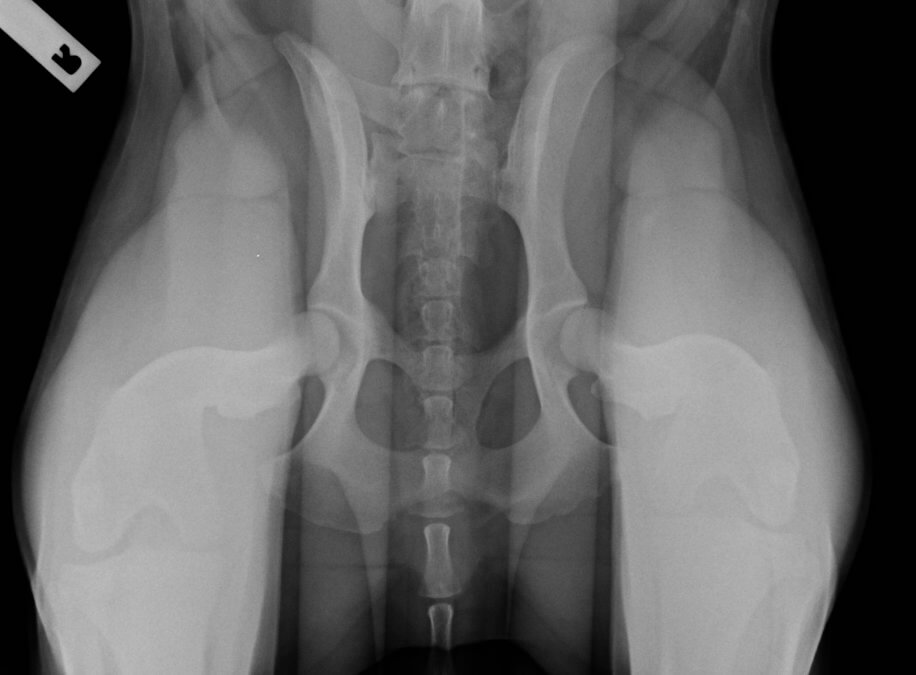Canine Hip Dysplasia is one of, if not the most common, heritable orthopaedic condition in seen in dogs. It most commonly occurs in large and giant breed dogs, however it can still affect small and medium breeds of dog. Hip dysplasia refers to the abnormal joint development of a hip joint. The hip joint is a ball and socket joint and in cases of hip dysplasia the ‘ball’ is not sitting well in the ‘socket’, resulting in looseness and instability of the joint. Over time painful inflammation and irreversible damage to the cartilage of the joint occurs.
Hip dysplasia to a large degree is inherited, but other risk factors include excessive exercise and high protein nutrition as a growing puppy. Dogs who have hip dysplasia often show the following signs:
- Reluctance to run or jump
- Abnormal gait known as ‘bunny-hopping’
- Reduced play
- Pain on extension of the hip
- Holding one foot out to the side
How do we diagnose hip dysplasia?
A combination of history, breed and clinical examination by a veterinarian will raise suspicion of hip dysplasia. Radiographs (or xrays) are then used to evaluate the hips for any degenerative changes (osteoarthritis, bone spurs or bone re-modelling) or evidence of subluxation (partial/incomplete dislocation) of the hip joint. Hips can also be graded using either traditional hip scoring methods or the newer and much better predictor of osteoarthritis, PennHip testing. This is particularly important when considering using a dog for breeding purposes. We do not recommend breeding from dogs who have hip dysplasia.
What if my dog has hip dysplasia?
Depending on the age of the dog and the severity of hip dysplasia there a range of treatment options. Early intervention with surgery (to correct the alignment of the joint), medical management or exercise management all the way through to end stage hip replacement surgery are all possibilities. Each case is assessed on an individual basis.
How to minimize the risk of hip dysplasia
While there are no guarantees we advise that you purchase at risk breed puppies (such as Labradors, German Shepherd, Rottweilers) from a reputable breeder who has had the pups’ parents professionally ‘hip scored’. The aim is to have parents with the lowest score with the older traditional hip scoring or the lowest ‘distraction index’ with PennHip reporting. Ensuring that they are not over-exercised whilst their joints are still developing and ensuring that they are on a high-quality puppy diet can also help to minimize the risk. For at risk breeds it is worth having the PennHip testing done as a puppy to see if they have hip dysplasia and their risk factor for developing osteoarthritis. Preventative surgery can be done while a puppy is still growing to reduce the risk of early onset arthritis developing. PennHip Reporting is offered at South Cranbourne Veterinary Surgery and can be performed on any dog over 4 months of age. As it needs either heavy sedation or an anaesthetic we will commonly do it at the time of desexing.






